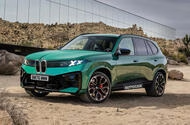Is BMW Really Bringing Hydrogen Power to the X5? Here’s What You Need to Know
If you’ve been following the evolution of eco-friendly vehicles, you might be wondering: is BMW actually putting a hydrogen-powered X5 on the road? The answer is yes—and the story behind it is more interesting than you might expect.
What’s Driving BMW to Add Hydrogen to the X5 Lineup?
BMW isn’t just dipping its toes into alternative fuels—they’re diving in headfirst. With the fifth-generation X5, set to launch in 2028, BMW plans to offer a hydrogen fuel cell electric vehicle (FCEV) alongside its traditional petrol, diesel, plug-in hybrid, and fully electric models. This move isn’t just about ticking a green box. It’s part of BMW’s broader strategy to give drivers more choices as the world shifts toward cleaner transportation.
Why hydrogen? According to the International Energy Agency, hydrogen-powered vehicles can refuel in minutes and offer long driving ranges, making them a compelling option for those who want electric-like efficiency without the wait. BMW’s partnership with Toyota—one of the pioneers in hydrogen technology—adds serious credibility to this project.
How Will the New Hydrogen X5 Be Different From the Experimental iX5?
You might remember the iX5 Hydrogen, BMW’s testbed for fuel cell technology. That model was never available to the public—it was strictly for internal testing and development. But the upcoming X5 FCEV is a different beast. It’s designed for commercial sale, though BMW is starting with select markets that already have hydrogen refueling stations.
The new fuel cell system is a big leap forward. Compared to the iX5 Hydrogen’s setup, the third-generation system is about 25% smaller but packs more punch. It’s more powerful, more efficient, and easier to integrate into different vehicle platforms. That means BMW isn’t just thinking about the X5—they’re laying the groundwork for a whole family of hydrogen-powered vehicles in the future.
What Kind of Performance and Range Can You Expect?
Let’s get into the numbers. The iX5 Hydrogen combined a 187-horsepower fuel cell stack with a 295-horsepower electric motor, delivering a total of 396 horsepower. It could travel roughly 313 miles on a full tank of hydrogen, stored in two high-pressure tanks.
BMW says the upcoming system will beat those figures across the board. While they haven’t released exact specs yet, expect improvements in range, power, and efficiency. The modular design also means this technology could show up in everything from sporty sedans to larger SUVs.
Where Will BMW Build the Hydrogen X5—and What’s New on the Inside?
Production is a global effort. The new fuel cell stacks will be assembled at BMW’s plant in Steyr, Austria, where they’re investing in new lines and testing facilities. Key components like the high-voltage control unit—dubbed the BMW Energy Master—will come from their Landshut facility in Germany. Prototypes are already being built at the Dingolfing plant, showing just how serious BMW is about scaling up hydrogen tech.
Step inside the next-gen X5, and you’ll notice some dramatic changes. Gone are the traditional gauges and the familiar iDrive rotary controller. Instead, you’ll find a sweeping panoramic display and a massive 17.9-inch central touchscreen. Voice and touch controls will take center stage, reflecting BMW’s push toward a more intuitive, digital driving experience.
Is the World Ready for Hydrogen SUVs?
Here’s the catch: hydrogen vehicles need infrastructure. Right now, only a handful of regions—mainly in Europe, Japan, and parts of California—have enough hydrogen stations to make daily driving practical. That’s why BMW is rolling out the hydrogen X5 in select markets first.
But the momentum is building. According to a 2023 report from the Hydrogen Council, the number of hydrogen refueling stations worldwide grew by 40% in just two years. Governments and industry leaders are investing billions to expand the network, signaling that hydrogen could play a major role in the future of clean mobility.
How Does BMW’s Hydrogen Bet Stack Up Against Other Green Technologies?
BMW isn’t abandoning batteries—far from it. Their electric lineup is expanding rapidly. But they see hydrogen as a complementary solution, especially for drivers who need fast refueling or longer range than current batteries can provide. It’s a pragmatic approach: let the customer choose what works best for their lifestyle.
Toyota, Hyundai, and Honda are also pushing hydrogen, but BMW’s move to bring it into a mainstream SUV like the X5 could be a tipping point. If it succeeds, it might encourage other automakers to follow suit.
What’s the Big Takeaway for Drivers and Car Enthusiasts?
BMW’s hydrogen-powered X5 isn’t just a technological experiment—it’s a sign that the auto industry is getting serious about offering real alternatives to fossil fuels. While challenges remain, especially around infrastructure, the progress is undeniable. If you’re passionate about driving and care about the planet, the next few years are going to be exciting.
The bottom line? Hydrogen might not replace batteries overnight, but it’s no longer a distant dream. With BMW’s commitment and the backing of global partners, the hydrogen X5 could mark the start of a new era—one where clean, powerful, and practical vehicles are within everyone’s reach.

